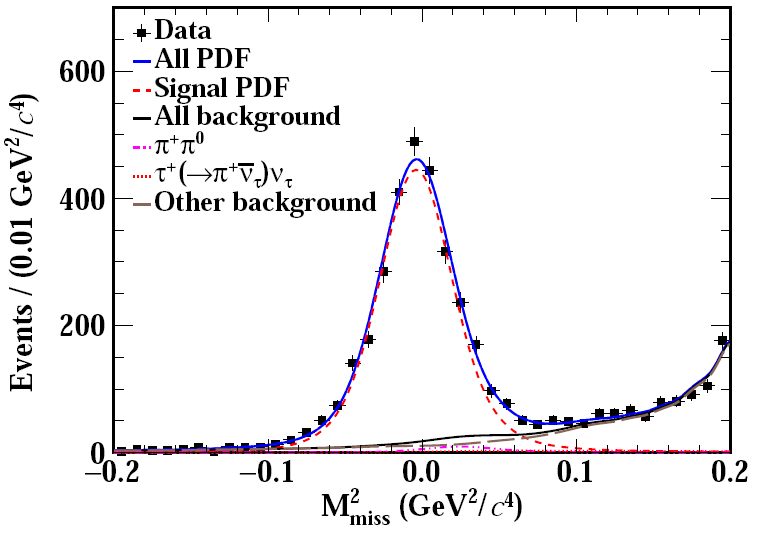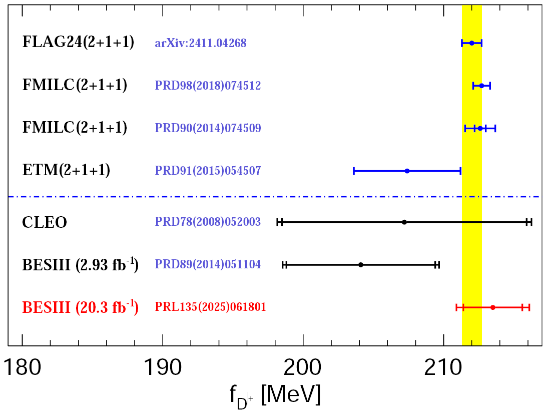

The BESIII collaboration has reported the precision measurement of the branching fraction of the leptonic decay D+→μ+νμ. This result has been published in Physical Review Letters on 04 August 2025. [Phys. Rev. Lett. 135, 061801 (2025)].
Leptonic D+ decays provide a unique insight for understanding the decay mechanisms of charm quark. In the Standard Model, the leptonic D+ decays involve the strong and weak interactions, which can be parameterized by the decay constant fD+ and the quark mixing-matrix (CKM matrix) element |Vcd| (which is one of fundamental constants of the Standard Model), respectively. Based on the precisely measured branching fraction of D+→μ+νμ, one can determine the product of fD+ and |Vcd|. The obtained fD+ and |Vcd| are critical to test the lattice quantum chromodynamics (LQCD) calculations and the CKM matrix unitarity, respectively. This is one of fundamental measurements in hadron physics field! This measurement made it possible to extract |Vub| and |Vcb|, which played an indispensable role in testing the unitary nature of the CKM matrix.
Previously, LQCD calculation on fD+ reached a precision of 0.2% and BESIII reported a measurement of D+→μ+νμ by analyzing data taken in 2010-2011. Based on full 20.3 fb-1 of e+e- annihilation data collected at the center-of-mass energy of 3.773 GeV in 2010-2011 and 2022-2024, BESIII measures the branching fraction of D+→μ+νμ with unprecedent precision to be B(D+→μ+νμ)=(4.034±0.080stat±0.040syst)×10-4. The product of fD+ and |Vcd| is determined to be (48.02±0.48stat±0.24syst±0.12input ±0.15EM) MeV. This result is a factor of 2.3 more precise than the previous best measurement. Using the value of the |Vcd| given by the global standard model fit, we obtain fD+= (213.5±2.1stat±1.1syst±0.8input ±0.7EM) MeV. Alternatively, using the value of fD+ from a precise LQCD calculation, we extract |Vcd|= 0.2265 ± 0.0023stat ± 0.0011syst ± 0.0009input ± 0.0007EM.
Figure 1 exhibits the signal of D+→μ+νμ as well as the comparison of the fD+ measured in this work, other measurements and those given by different LQCD predictions.
Reference: Phys. Rev. Lett. 135, 061801 (2025)
Journal link: https://link.aps.org/doi/10.1103/0b8v-4rnh


Fig. 1: (left) The signal of D+→μ+νμ and (right) the comparison of the fD+ measured in this work, other measurements and those given by different LQCD predictions.